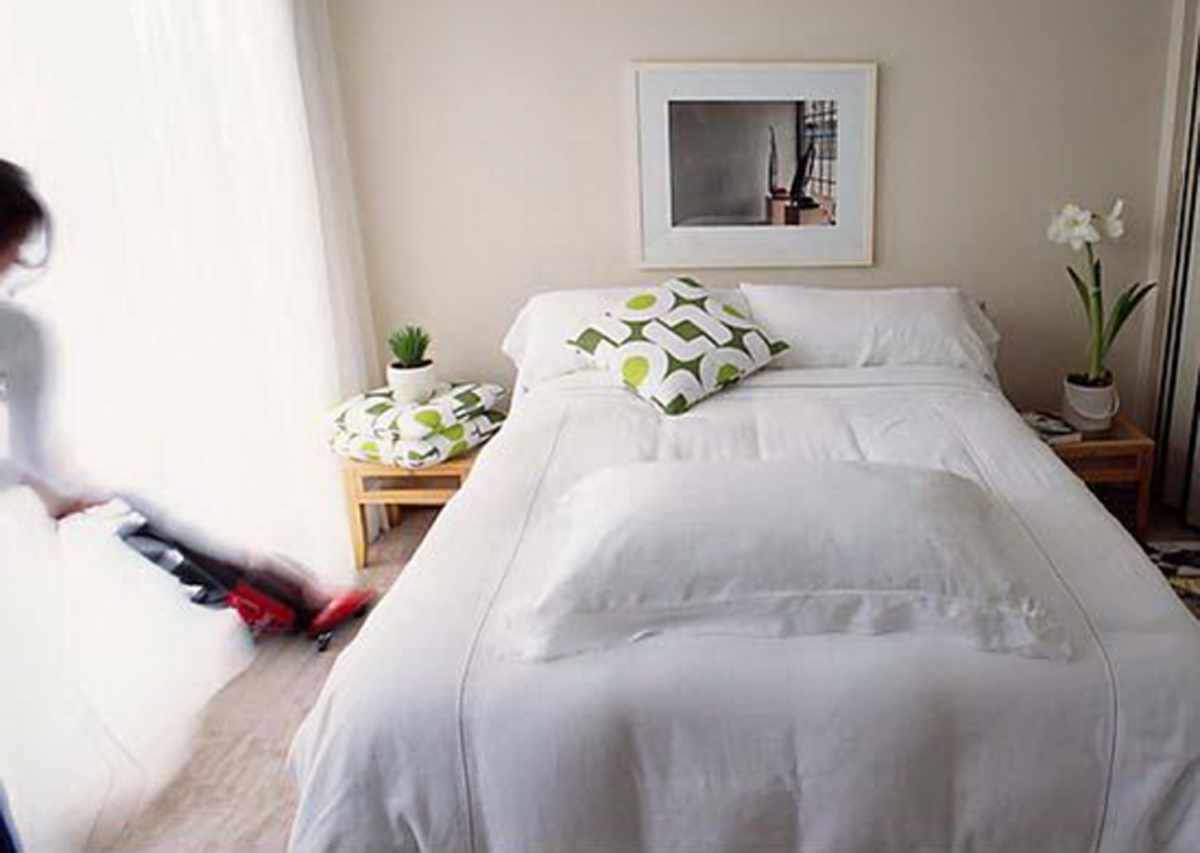Table of Contents
Well…beds!
Don’t get us wrong, bed bugs are not a result of poor housekeeping.

There are many ways that these bugs gain entry into your homes. You could pick them up from a place you have recently visited – such as a friend’s house, a hotel, etc. They can also travel on pets, backpacks, suitcases and even clothing items. Bed bugs also tend to penetrate the house through cracks, false ceilings, floors and walls.
So for instance, if your neighbor has had a bed bug infestation, odds are you will probably end up with some too. Additionally, people who use a lot of antique furniture or secondhand furniture (purchased at garage sales for instance) should especially be careful. It is almost impossible for you to know whether or not your furniture is infested with those microscopic invaders patiently waiting for their next host. This is not to say that all old or antique furniture have bed bugs.
How do you know you have bed bugs in your house?
Be vigilant, and always be on the alert for signs of an infestation. Of course, you don’t have to inspect each wooden furniture in your house for bed bugs, but there are a few highly indicative signs.
Bed bugs do not generally live in nests, but they tend to stay close to each other in a small group. Areas where the bed bugs tend to stay are typically marked by dark spotting and staining; which is basically the result of their dried excrement. Those dark spots also contain the hatched and un-hatched eggs of the bugs, as well as the shed skin of their maturing nymphs, or even of the bugs themselves. Another sign of a bed bugs clump is the presence of rusty or reddish smears on mattresses, bed sheets and couches, which may indicate crushed bed bugs. You might also perceive a sweet or musty smell in the room (emitted by the insects’ scented glands).
What are your health concerns?
Bed bugs feed by piercing the skin with an elongated beak through which they suck up your blood. Yes, that sounds scary, but the reality is you don’t even notice it until you see a bite make on your skin! It takes roughly three to ten minutes, but because the bite is painless, you might not realize that you are being bitten.
The parts of your body that are the most vulnerable to bed bug bites are your hands, arms, legs, shoulder and of course, your face. When the bug bites, it injects an anesthetic substance (substance that removes any pain sensation) through its saliva. This anesthetic substance numbs the pain. However, it does not spread any infection. Days after having been bitten, many people develop an itchy bump on the skin. However, it is not recommended to scratch the bump, because it will only get worse. Instead, you can apply a warm compress followed by an itch-relieving cream (sold over the counter). Most people assume they have been bitten by a mosquito.
How do I protect myself from getting bed bugs at home?
Knowing how to prevent bed bugs infestations is essential, as they seem to be on the rise again. The first step is always to start in your own neighborhood. Additionally, keep your pets indoors if you know there is a bug infested furniture outside.
Change your bedding, clean and vacuum at least twice a month. You already know what they look like, so look for bed bugs while you clean especially around the edge of the mattresses.
Make sure you carefully check all the items you bring in home, to make sure they are “bed bug free”. Get rid of all the clutter, seriously. Remove boxes and other stored items in bedrooms, as they may become excellent hiding places for those unwanted parasites. As much as you can, ensure that your bed sheets and covers do not touch the floor.
Read More: 12 Ways to Keep your House Clean
Eliminate hiding places, and seal all cracks and crevices. Bed bugs can sneak into homes through cracks in the walls, floors, and windows. Regularly inspect your home for these tiny openings and seal them with caulk.
When traveling, inspect hotel mattresses, headboards, and luggage racks for bed bugs. Keep luggage off the floor and use a luggage rack, preferably a metal one as bed bugs have a harder time climbing metal surfaces. Immediately after trips, wash clothing and inspect your suitcases inside out.
Protective covers, often called encasements, are designed to trap existing bed bugs inside and prevent new ones from getting in. They are especially useful for mattresses, box springs, and pillows where bed bugs commonly hide.
The fabric's weave should be tight enough to prevent bed bugs and their eggs from passing through. Opt for covers with strong zippers that have a tight seal. Some encasements feature zippers with teeth small enough to prevent bed bug entry and escape. A good encasement should resist tearing, as tears and holes can provide entry points for bed bugs.
Now, you should have a much better idea of what bed bugs look like, how they can get into your homes, how to detect them and how to protect yourself. With the simple techniques and measures that we mentioned, you should be able to get rid of bed bugs on your own. However, if things get out of control, it is best to call a professional extermination company.
- Photo courtesy of Gilles San Martin by Flickr : www.flickr.com/photos/sanmartin/5975917188/
- Photo courtesy of Stephani Spitzer by Flickr : www.flickr.com/photos/7263772@N06/6345606447/
- www2.ca.uky.edu/entomology/entfacts/ef636.asp
- www.bedbugs.org/how-to-get-rid-of-bed-bugs/
- www.kingcounty.gov/healthservices/health/ehs/bedbugs.aspx
- www.wikihow.com/Prevent-Bed-Bugs


Your thoughts on this